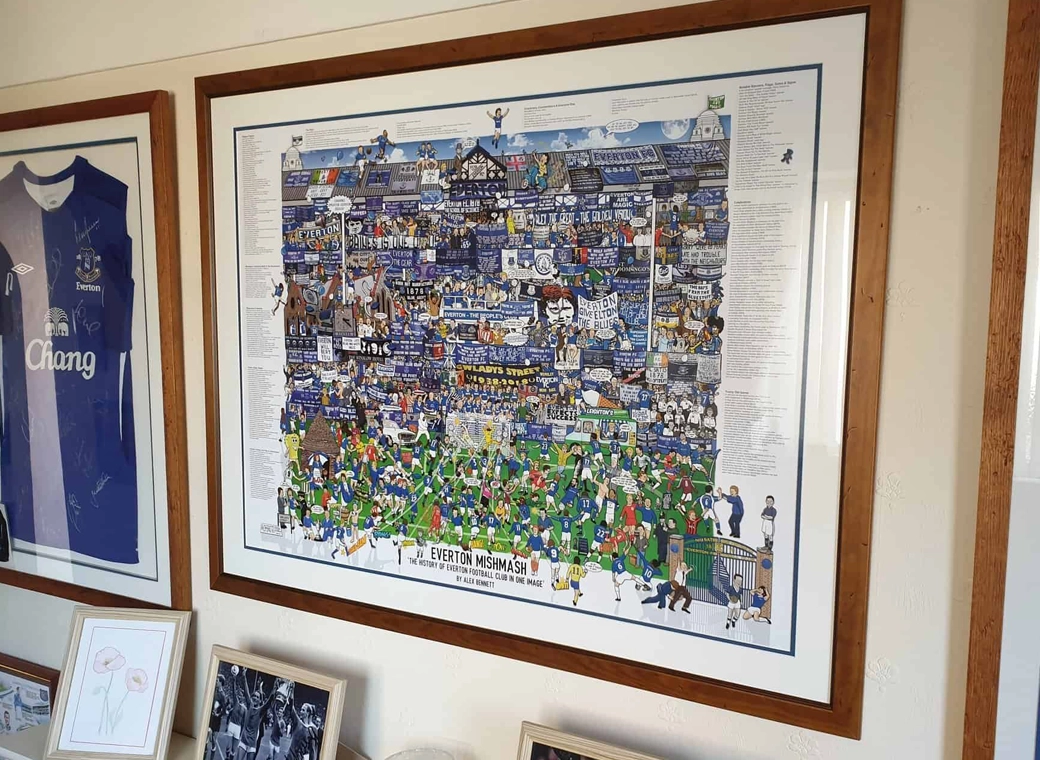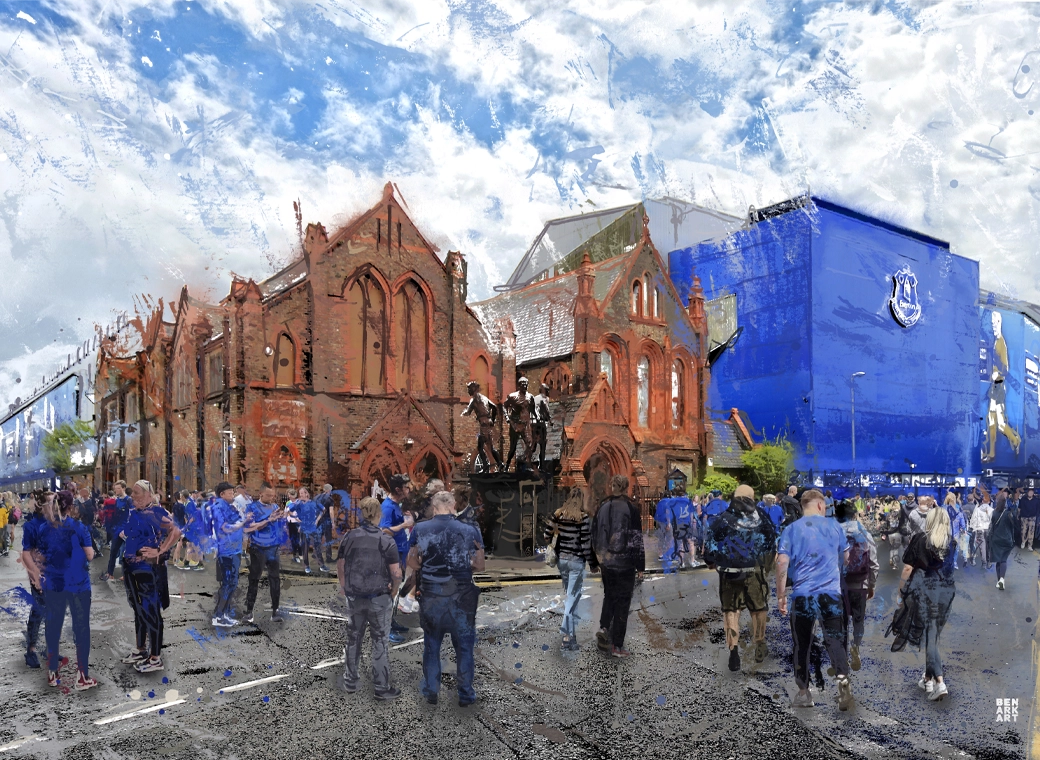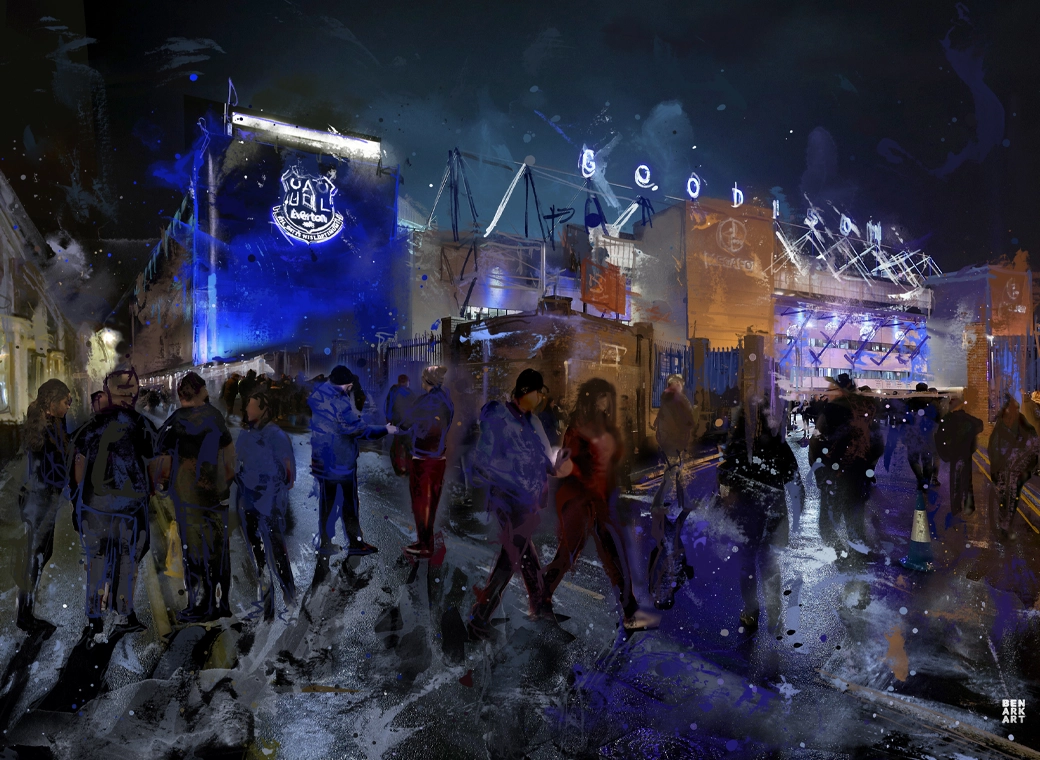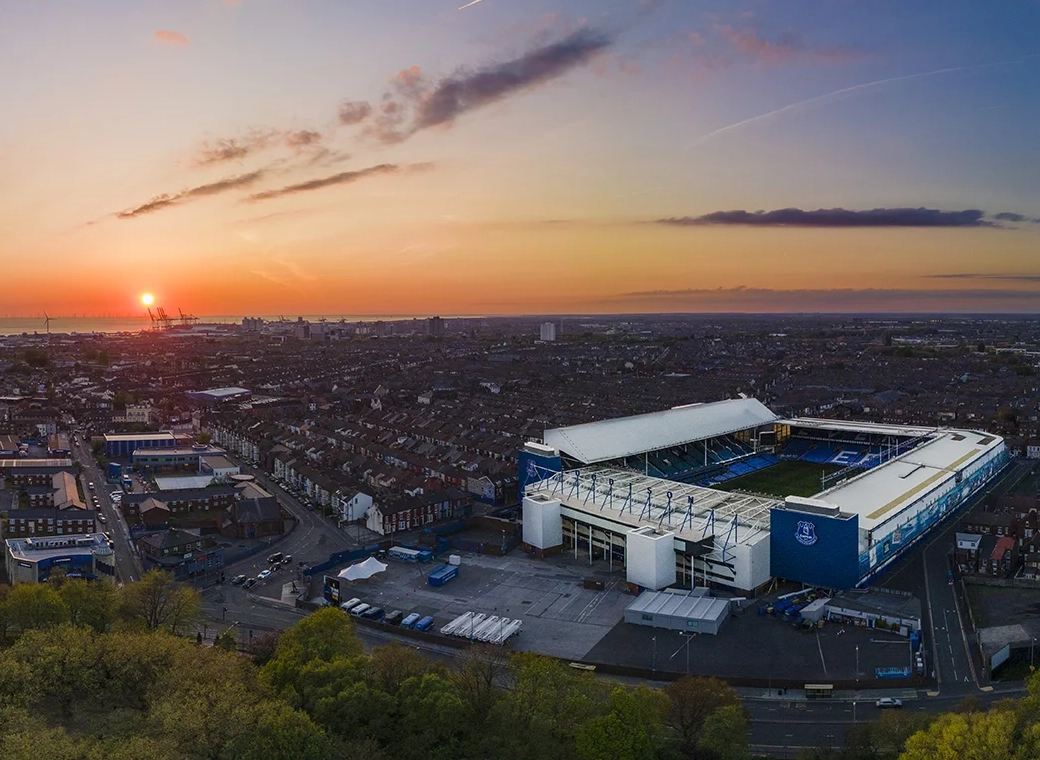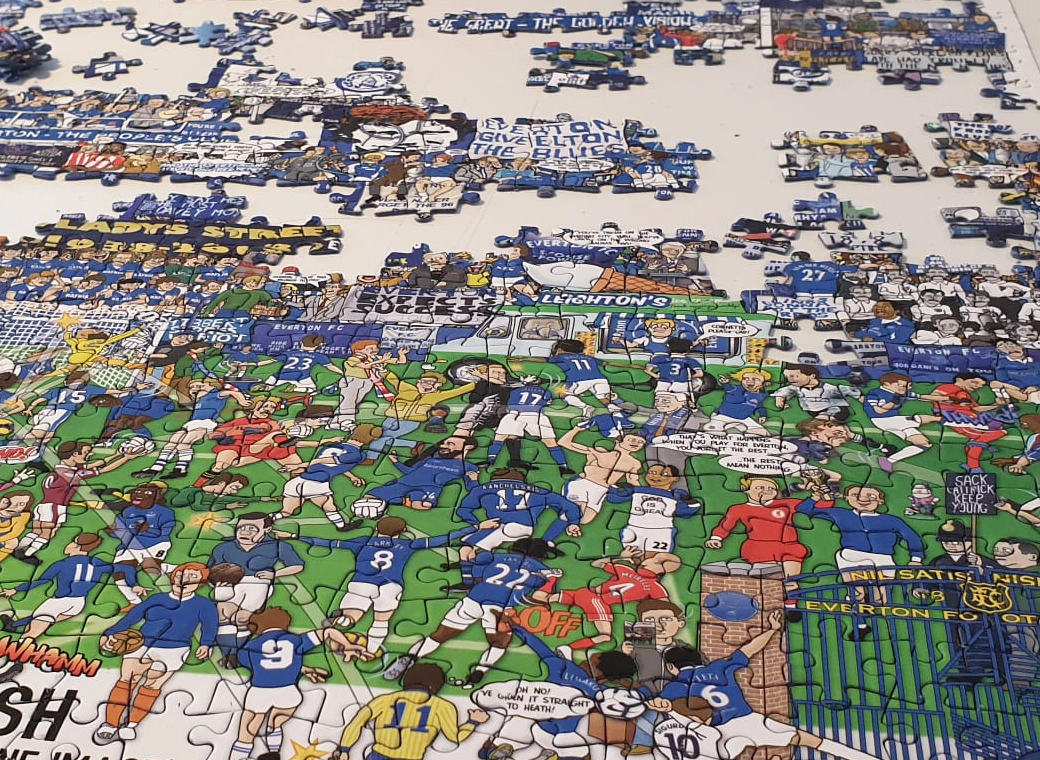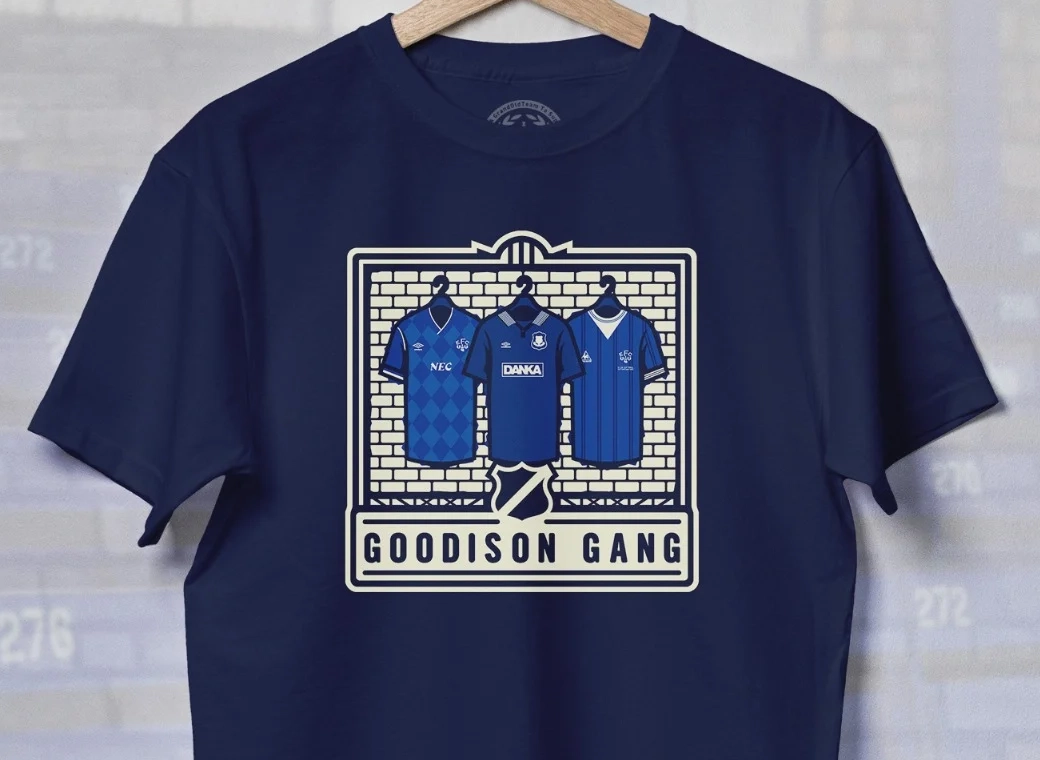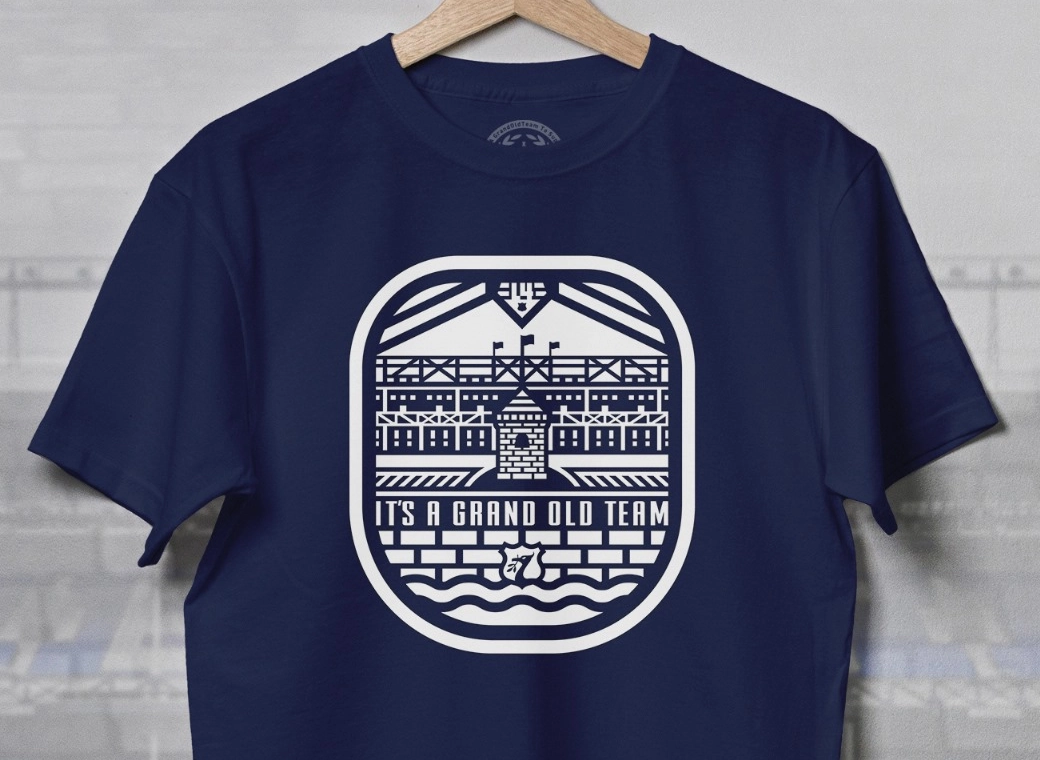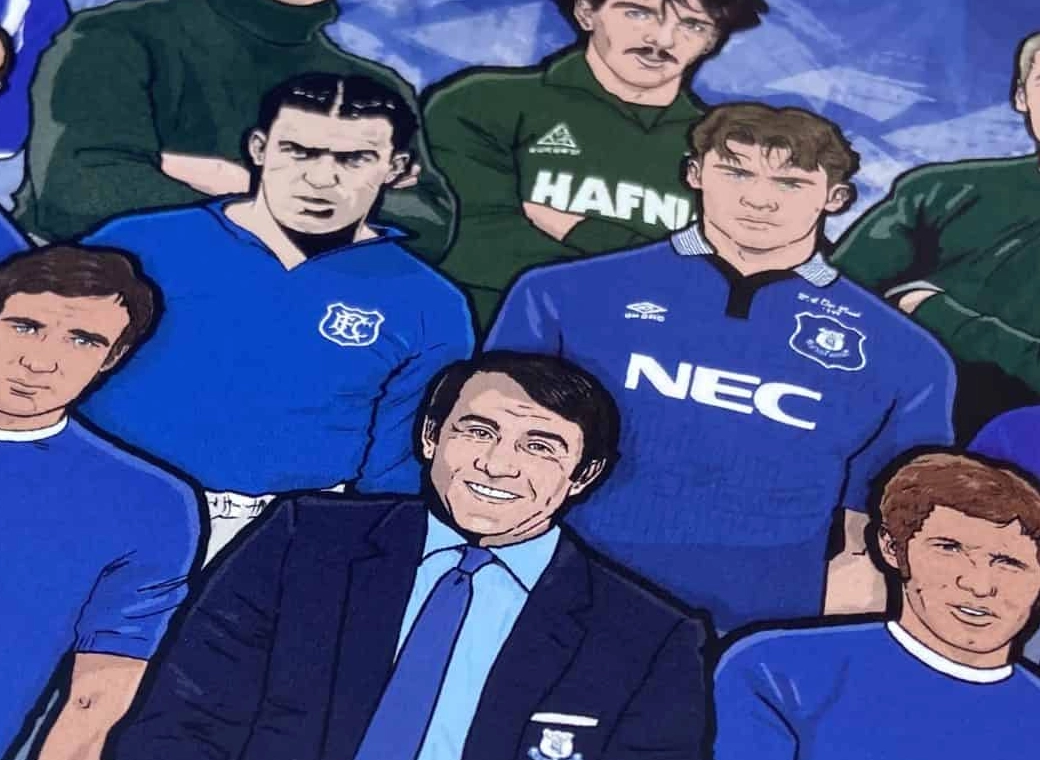I've been a big fan of Emery's for a while now but given the events of last night I thought it might be useful to look at his career in a bit more detail. To start the ball rolling here's a good article about him, although it's a couple of years old
https://intacttactic.wordpress.com/2015/01/03/unai-emery/
UNDERRATED MANAGERS: PART 1 – UNAI EMERY
January 3, 2015
Unai Emery
Managerial Information
 Lorca Deportiva (2004-2006)
Lorca Deportiva (2004-2006)
Unai Emery was given the job at Lorca Deportiva after an injury forced him into early retirement while playing for the club. Lorca had a difficult start to the season meaning the manager’s job became available in mid-November. Emery took charge and by the end of the season had taken the club to a playoff place, which they won, resulting in the club’s first promotion to the Spanish Second Division in the clubs history. In that season Unai Emery also knocked Malaga out the Copa Del Rey to take Lorca to the last 16, where they were eliminated by Atletico Madrid. That was the furthest the club ever got in the Copa Del Rey.
The first season in the Segunda Division Unai Emery took them to an astonishing 5th place finish – they were 2nd favourites to get relegated. Emery got offered the Almeria job at the end of the season, which he took. The season after he left Lorca they finished 21st out of 22 and were relegated. The club were founded in 2002 and disbanded in 2012. Unai Emery’s 2 years in charge were their 2 most successful. He finished with a 45% win percentage. Marca voted him as the best coach in the division.
Almeria (2006-2008)
Emery took over Almeria after they finished 6th in the 2005/06 season. First season in charge he got them promoted with a 2nd place finish, despite spending no money and relying on free transfers and loans. Again he was voted best coach in the division by Marca.
Then, in his first season in La Liga (2007/08) he lead them to their all-time highest position of 8th. That season a total of £8.5m was spent on transfers, of which £6.5m were on Negredo (22), Diego Alves (22) and Felipe Melo (24). In 2007/08 he took them to, what was at that time, their joint best Copa Del Rey run – the last 32. He left Almeria after 2 seasons in charge with a win percentage of 46.43% after he was offered the Valencia job.
Valencia (2008-12)
 2008/09
2008/09
After 4 successful years in management, Valencia gave a 36 year old Unai Emery the chance at a big club. The season before taking over, Valencia won the Copa Del Rey, but with a 10th place finish in the league and failing to get out the Champions League group (finishing bottom even below Rosenborg) a managerial change was needed.
Unai Emery stepped in and had a respectable first season – finshing 6th in the league, reaching the quarter finals of the Copa Del Rey and the last 32 of the UEFA Cup, while again only having limited funds in the transfer market. Before and after the UEFA Cup games, Valencia had an impressive 13-4-6 league record, compared to the 5-4-6 during their UEFA Cup run. Also during this time Valencia had huge debt problems meaning many players weren’t being paid. The decline then rise in form, unsurprisingly, coincided with Valencia not paying them, then managing to secure a loan to cover the wages of the players. It was during this time that Villarreal were knocked out of the UEFA Cup despite looking very impressive in Europe until that point. The financial problems played a huge part in his first season, though signs were positive, especially in the league.
2009/10
As a result of the financial problems, in the 2009/10 season Valencia sold £18.5m worth of players, several being first team players, then only reinvested £4.5m into the team. Emery signed Jeremy Mathieu on a free transfer and Moya for £4.4m. Valencia had an incredible season considering the financial uncertainty and turnover in players – finishing in 3rd (only behind Real Madrid and Barcelona) and reached the Quarter Final of the Europa League (knocked out to eventual winners, Atletico Madrid, on the away goals rule after a 2-2 aggregate draw).

2010/11
The 2010/11 season was quite strange for Valencia in a number of ways. With the financial problems growing by the day, the club was forced to sell their 2 biggest assets – David Villa and David Silva, as well as a few other starters, such as Marchena and Alexis, both joining close rivals. Emery brought in free transfers Feghouli and Ricardo Costa, while spending £23m on Soldado, Tino Costa, Mehmet Topal, Aduriz and Jonas. Valencia had made a ridiculous £50m profit on transfers that window, which suggested a collapse was on the cards. However, Emery managed to steady the ship and again surpass expectations – Valencia finished 3rd in the league with a larger margin between them and 4th from the previous season (9 points). Their first Champions League in 3 years saw them finish 2nd in the group to Man United before being knocked out in the last 16 to Schalke. Valencia were knocked out in the last 16 of the Copa Del Rey to Villarreal. Given the financial difference between them and the top 2, as well as the quality of players they were forced to sell, it was still a hugely impressive season.
2011/12
His final season in charge was in the 2011/12 season. It started very similar to the last with another key player, Juan Mata being sold. Joaquin and Manuel Fernandes were also sold. Unai Emery, as he’d done in every year at Valencia, spent the limited funds available to build a competitive team. Although he spent £29m, the net spend was only £1m and the wages budget allowed was decreased. Victor Ruiz, Piatti, Rami, Dani Parejo, Diego Alves and Barragan were brought in with Canales on loan and Paco Alcacer being promoted to the first team. Valencia again finished 3rd in the league behind Barcelona and Real Madrid, which is the most they could have hoped for. Valencia were knocked out of the Champions League with a 3rd place finish – behind Chelsea (who won it) and Leverkusen, so they were put in the Europa League. Valencia reached the semi-final where they were knocked out to Atletico Madrid (who won it). Valencia also reached the semi-final of the Copa Del Rey where they were knocked out to Barcelona (yes, they also won it). At the end of the year Emery decided to leave having taken Valencia as far as he thought they could go under him.
In summary he took over a financially unstable Valencia side and despite being forced to sell key players each season, he took them from 10th (the season before he took over) up to 6th, then 3rd, 3rd and 3rd. The year after he left Valencia finished 5th. He ended his 4-year spell with a record of 107-58-55 in all competitions (48.64% win percentage) scoring 385 and conceding 262.
Spartak Moscow 2012
After 8 consecutive successful years in Spain, Emery moved to Russia to manage Spartak Moscow. Spartak had just finished 4th in the league. The year Emery took over the competition for the top places grew with Anzhi spending huge amounts on a few big names, as well as Zenit, CSKA and Rubin investing a fair amount. Unai Emery was sacked just over half way into the season with a league record 9-2-6 – 1.71 points per game. The following 13 games Spartak’s league record was 6-4-3 – 1.69 points per game. They eventually finished 4th. On paper the season was unsuccessful but given the lack of time and trust given, it’s hard to tell what Emery could’ve done. They declined after his departure averaging 1.67 points per game in 2013/14, finishing 6th and currently sitting in 6th with 1.63 points per game this season. Spartak were knocked out of the Russian Cup in the last 16 on penalties to Rostov, which was a huge part of Emery’s sacking. Spartak were also knocked out of a tough Champions League group including Barcelona and Benfica.
Russia is a strange league, especially from a managerial perspective. Clubs are strangely inconsistent, transfer fees make little since and owners are generally trigger-happy. I don’t think he made the right choice going there. It was ultimately a failure, though I do think given time he would’ve done a lot better than they have since his sacking. Emery ended his Spartak career with a 46.15% win percentage.
Sevilla 2013-
 2013/14
2013/14
After finishing 9th in 2012/13, Sevilla brought in Unai Emery to get them back up the table and back to where they thought they should be. The season started similar to several at Valencia with a huge turnover of players, including many of Sevilla’s key men – Negrado, Navas, Kondogbia, Medel, Spahic and Luis Alberto as well as 8 others released or sold for a total of £80m. Sevilla invested £30m back into the team with Emery signing Gameiro, Bacca, Vitolo, Iborra, Beto, Carrico and several others. Given the £50m profit, like at Valencia, you’d think a crisis could be on the cards especially as they’d finished 9th. Sevilla finished the 2013/14 season as Europa League Champions and 5th in La Liga. An unbelievable season considering the squad they had, the players they lost and what happened the season before.
2014-
Now, 16 league games into the 2014/15 season, Emery’s Sevilla sit 4th. Valencia, his old club, are the closest opposition and have started the season very well – their new financial backing and a strange link to Benfica is helping them out. Sevilla again made a profit on transfers (£25m) with Moreno, Rakitic and Fazio making up most of the revenue. As repetitive as it sounds, Emery again spent very well, bringing in Krychowiak, Aleix Vidal, Ever Banega, Tremoulinas, Pareja, Mbia and loaning in Denis Suarez, Deulofeu and Iago Aspas
 for a total £18.4m. In the current footballing world with that amount being spent on 1 or 2 players, it’s amazing to see a manager continually finding bargains through thorough scouting and an understanding of what he needs to build team-after-team who can compete with anyone, aside from the elite.
for a total £18.4m. In the current footballing world with that amount being spent on 1 or 2 players, it’s amazing to see a manager continually finding bargains through thorough scouting and an understanding of what he needs to build team-after-team who can compete with anyone, aside from the elite.
Sevilla are currently in the last 16 of the Copa Del Rey having won their first tie 11-2 on aggregate – they face Granada next. Sevilla unfortunately missed out on Champions League qualification by 1 year. Europa League winners from 2014/15 qualify for the Champions League. Sevilla are now in the last 32 of the Europa where they face Lucien Favre’s Gladbach. Given the quality of the 2 managers, it’s hard to imagine either being stuck in charge of many Europa League ties in a few years.
Summary
Unai Emery hasn’t got a huge collections of trophies like some managers in Europe, but what he does offer that many don’t is his ability to consistently achieve and surpass expectations. The clubs he’s managed haven’t been expected to win trophies, though if you take out the elite, he’s often finished in the next available place (especially at Valencia with three 3rd place finishes in four years – only behind Barcelona and Real Madrid). The style of play, though not as exciting tactically as a Roger Schmidt or Pep Guardiola, is incredibly well thought out and organised. His teams are always flexible, mostly a 4-2-3-1, but there are always tweaks to suit both what he has at his disposal and to take advantage of the opposition. He’s an obsessive perfectionist and I have no doubts that whatever top club gives him his chance in the elite won’t regret it. Success follows him from club-to-club, and that is no coincidence.
Main Achievements 2004-2014
https://intacttactic.wordpress.com/2015/01/03/unai-emery/
UNDERRATED MANAGERS: PART 1 – UNAI EMERY
January 3, 2015
Unai Emery
Managerial Information
 Lorca Deportiva (2004-2006)
Lorca Deportiva (2004-2006)Unai Emery was given the job at Lorca Deportiva after an injury forced him into early retirement while playing for the club. Lorca had a difficult start to the season meaning the manager’s job became available in mid-November. Emery took charge and by the end of the season had taken the club to a playoff place, which they won, resulting in the club’s first promotion to the Spanish Second Division in the clubs history. In that season Unai Emery also knocked Malaga out the Copa Del Rey to take Lorca to the last 16, where they were eliminated by Atletico Madrid. That was the furthest the club ever got in the Copa Del Rey.
The first season in the Segunda Division Unai Emery took them to an astonishing 5th place finish – they were 2nd favourites to get relegated. Emery got offered the Almeria job at the end of the season, which he took. The season after he left Lorca they finished 21st out of 22 and were relegated. The club were founded in 2002 and disbanded in 2012. Unai Emery’s 2 years in charge were their 2 most successful. He finished with a 45% win percentage. Marca voted him as the best coach in the division.
Almeria (2006-2008)
Emery took over Almeria after they finished 6th in the 2005/06 season. First season in charge he got them promoted with a 2nd place finish, despite spending no money and relying on free transfers and loans. Again he was voted best coach in the division by Marca.
Then, in his first season in La Liga (2007/08) he lead them to their all-time highest position of 8th. That season a total of £8.5m was spent on transfers, of which £6.5m were on Negredo (22), Diego Alves (22) and Felipe Melo (24). In 2007/08 he took them to, what was at that time, their joint best Copa Del Rey run – the last 32. He left Almeria after 2 seasons in charge with a win percentage of 46.43% after he was offered the Valencia job.
Valencia (2008-12)

After 4 successful years in management, Valencia gave a 36 year old Unai Emery the chance at a big club. The season before taking over, Valencia won the Copa Del Rey, but with a 10th place finish in the league and failing to get out the Champions League group (finishing bottom even below Rosenborg) a managerial change was needed.
Unai Emery stepped in and had a respectable first season – finshing 6th in the league, reaching the quarter finals of the Copa Del Rey and the last 32 of the UEFA Cup, while again only having limited funds in the transfer market. Before and after the UEFA Cup games, Valencia had an impressive 13-4-6 league record, compared to the 5-4-6 during their UEFA Cup run. Also during this time Valencia had huge debt problems meaning many players weren’t being paid. The decline then rise in form, unsurprisingly, coincided with Valencia not paying them, then managing to secure a loan to cover the wages of the players. It was during this time that Villarreal were knocked out of the UEFA Cup despite looking very impressive in Europe until that point. The financial problems played a huge part in his first season, though signs were positive, especially in the league.
2009/10
As a result of the financial problems, in the 2009/10 season Valencia sold £18.5m worth of players, several being first team players, then only reinvested £4.5m into the team. Emery signed Jeremy Mathieu on a free transfer and Moya for £4.4m. Valencia had an incredible season considering the financial uncertainty and turnover in players – finishing in 3rd (only behind Real Madrid and Barcelona) and reached the Quarter Final of the Europa League (knocked out to eventual winners, Atletico Madrid, on the away goals rule after a 2-2 aggregate draw).

2010/11
The 2010/11 season was quite strange for Valencia in a number of ways. With the financial problems growing by the day, the club was forced to sell their 2 biggest assets – David Villa and David Silva, as well as a few other starters, such as Marchena and Alexis, both joining close rivals. Emery brought in free transfers Feghouli and Ricardo Costa, while spending £23m on Soldado, Tino Costa, Mehmet Topal, Aduriz and Jonas. Valencia had made a ridiculous £50m profit on transfers that window, which suggested a collapse was on the cards. However, Emery managed to steady the ship and again surpass expectations – Valencia finished 3rd in the league with a larger margin between them and 4th from the previous season (9 points). Their first Champions League in 3 years saw them finish 2nd in the group to Man United before being knocked out in the last 16 to Schalke. Valencia were knocked out in the last 16 of the Copa Del Rey to Villarreal. Given the financial difference between them and the top 2, as well as the quality of players they were forced to sell, it was still a hugely impressive season.
2011/12
His final season in charge was in the 2011/12 season. It started very similar to the last with another key player, Juan Mata being sold. Joaquin and Manuel Fernandes were also sold. Unai Emery, as he’d done in every year at Valencia, spent the limited funds available to build a competitive team. Although he spent £29m, the net spend was only £1m and the wages budget allowed was decreased. Victor Ruiz, Piatti, Rami, Dani Parejo, Diego Alves and Barragan were brought in with Canales on loan and Paco Alcacer being promoted to the first team. Valencia again finished 3rd in the league behind Barcelona and Real Madrid, which is the most they could have hoped for. Valencia were knocked out of the Champions League with a 3rd place finish – behind Chelsea (who won it) and Leverkusen, so they were put in the Europa League. Valencia reached the semi-final where they were knocked out to Atletico Madrid (who won it). Valencia also reached the semi-final of the Copa Del Rey where they were knocked out to Barcelona (yes, they also won it). At the end of the year Emery decided to leave having taken Valencia as far as he thought they could go under him.
In summary he took over a financially unstable Valencia side and despite being forced to sell key players each season, he took them from 10th (the season before he took over) up to 6th, then 3rd, 3rd and 3rd. The year after he left Valencia finished 5th. He ended his 4-year spell with a record of 107-58-55 in all competitions (48.64% win percentage) scoring 385 and conceding 262.
Spartak Moscow 2012
After 8 consecutive successful years in Spain, Emery moved to Russia to manage Spartak Moscow. Spartak had just finished 4th in the league. The year Emery took over the competition for the top places grew with Anzhi spending huge amounts on a few big names, as well as Zenit, CSKA and Rubin investing a fair amount. Unai Emery was sacked just over half way into the season with a league record 9-2-6 – 1.71 points per game. The following 13 games Spartak’s league record was 6-4-3 – 1.69 points per game. They eventually finished 4th. On paper the season was unsuccessful but given the lack of time and trust given, it’s hard to tell what Emery could’ve done. They declined after his departure averaging 1.67 points per game in 2013/14, finishing 6th and currently sitting in 6th with 1.63 points per game this season. Spartak were knocked out of the Russian Cup in the last 16 on penalties to Rostov, which was a huge part of Emery’s sacking. Spartak were also knocked out of a tough Champions League group including Barcelona and Benfica.
Russia is a strange league, especially from a managerial perspective. Clubs are strangely inconsistent, transfer fees make little since and owners are generally trigger-happy. I don’t think he made the right choice going there. It was ultimately a failure, though I do think given time he would’ve done a lot better than they have since his sacking. Emery ended his Spartak career with a 46.15% win percentage.
Sevilla 2013-
 2013/14
2013/14After finishing 9th in 2012/13, Sevilla brought in Unai Emery to get them back up the table and back to where they thought they should be. The season started similar to several at Valencia with a huge turnover of players, including many of Sevilla’s key men – Negrado, Navas, Kondogbia, Medel, Spahic and Luis Alberto as well as 8 others released or sold for a total of £80m. Sevilla invested £30m back into the team with Emery signing Gameiro, Bacca, Vitolo, Iborra, Beto, Carrico and several others. Given the £50m profit, like at Valencia, you’d think a crisis could be on the cards especially as they’d finished 9th. Sevilla finished the 2013/14 season as Europa League Champions and 5th in La Liga. An unbelievable season considering the squad they had, the players they lost and what happened the season before.
2014-
Now, 16 league games into the 2014/15 season, Emery’s Sevilla sit 4th. Valencia, his old club, are the closest opposition and have started the season very well – their new financial backing and a strange link to Benfica is helping them out. Sevilla again made a profit on transfers (£25m) with Moreno, Rakitic and Fazio making up most of the revenue. As repetitive as it sounds, Emery again spent very well, bringing in Krychowiak, Aleix Vidal, Ever Banega, Tremoulinas, Pareja, Mbia and loaning in Denis Suarez, Deulofeu and Iago Aspas

Sevilla are currently in the last 16 of the Copa Del Rey having won their first tie 11-2 on aggregate – they face Granada next. Sevilla unfortunately missed out on Champions League qualification by 1 year. Europa League winners from 2014/15 qualify for the Champions League. Sevilla are now in the last 32 of the Europa where they face Lucien Favre’s Gladbach. Given the quality of the 2 managers, it’s hard to imagine either being stuck in charge of many Europa League ties in a few years.
Summary
Unai Emery hasn’t got a huge collections of trophies like some managers in Europe, but what he does offer that many don’t is his ability to consistently achieve and surpass expectations. The clubs he’s managed haven’t been expected to win trophies, though if you take out the elite, he’s often finished in the next available place (especially at Valencia with three 3rd place finishes in four years – only behind Barcelona and Real Madrid). The style of play, though not as exciting tactically as a Roger Schmidt or Pep Guardiola, is incredibly well thought out and organised. His teams are always flexible, mostly a 4-2-3-1, but there are always tweaks to suit both what he has at his disposal and to take advantage of the opposition. He’s an obsessive perfectionist and I have no doubts that whatever top club gives him his chance in the elite won’t regret it. Success follows him from club-to-club, and that is no coincidence.
Main Achievements 2004-2014
- Promotion
Lorca Deportiva – 2004/05 – Segunda División B - Promotion
Almeria – 2006/07 – Segunda División - 3 consecutive 3rd place finishes (only behind Barcelona and Real Madrid)
Valencia – 2009/10, 2010/11 & 2011/12 - Europa League Winners
Sevilla – 2013/14










